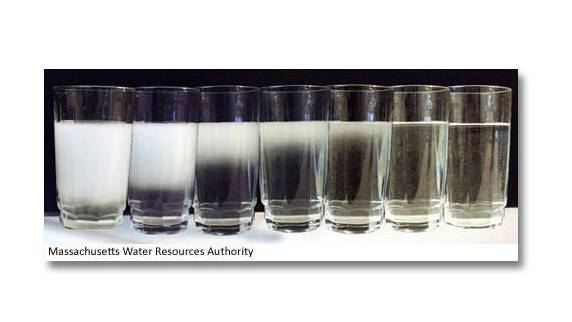A typical residence uses 10 units of water (or 7480 gallons) per person every three months for each quarterly billing cycle. This is about 83 gallons of water per person per day, including the water used for irrigating outdoor landscaping in the summer. Residential water consumption is typically higher during warmer months and lower in the colder months. Watering lawns and using air conditioners can increase water use.
City of Ann Arbor residents can use AquaHawk, a free online tool which will help City of Ann Arbor water customers to:
- View and track water consumption information collected by your water meter
- Get water alerts via email, text or phone
Please register for the new online consumption tool. For more information, see https://www.a2gov.org/services/water-billing/water-consumption/
Water usage
If you see a spike in water you may want to look for a leak.
Not sure where to start? Look at your water meter to see if the flow indicator is moving even if all the taps are closed. If the meter keeps moving, this indicates water is running somewhere. Look/listen for:
- faucet drips
- running water sounds
- pools of water near the refrigerators, toilets, hot water heater, humidifiers, outside faucets and sprinklers
If you notice seasonal water use during specific periods, consider what activities may occur at these times. Higher water use typically happens with filling pools, washing cars and or humidifiers. House guests, holiday visitors and other types of special events may boost your water usage as well. If you have trouble paying an unusually high water bill, please call us at 734.794.6320 for options.
Using water efficiently
Simple behaviors can save water every day:
- turning off the tap while brushing teeth
- taking shorter showers
- run dishwashers and laundry machines only when full
- water your lawn only when necessary and avoid watering mid-day
- using drip irrigation for plants and gardens
Indoors
Consider replacing your older toilet with a low-flow model. Low-flow shower heads and faucet aerators quickly reimburse you for their cost through water savings. Check EPA’s water utility auditing pages, including suggestions for WaterWise and EnergyStar appliance options to save water, energy and money.
Outdoors
Irrigation—watering lawns and gardens—can dramatically increase water usage. Consider:
- Watering in the early or late hours
- Watering lawn only when needed (turn off sprinklers in rainy periods)
- Reducing lawn areas, planting native species and applying mulch around plantings.
- Allowing lawn to go dormant during heat waves or excess dry periods. Dormant grass will rebound when cooler weather and rains return.
You can reuse water and save money on your stormwater bill rate by using rain barrels, installing a rain garden and taking an online RiverSafe Home tutorial.
If you don’t have access to a computer at home or need more assistance, please call the Customer Service Center at 734.794.6333 during weekday business hours. An account representative will be able to help you to review your water usage report.


